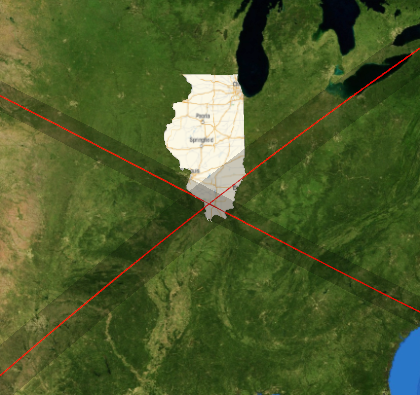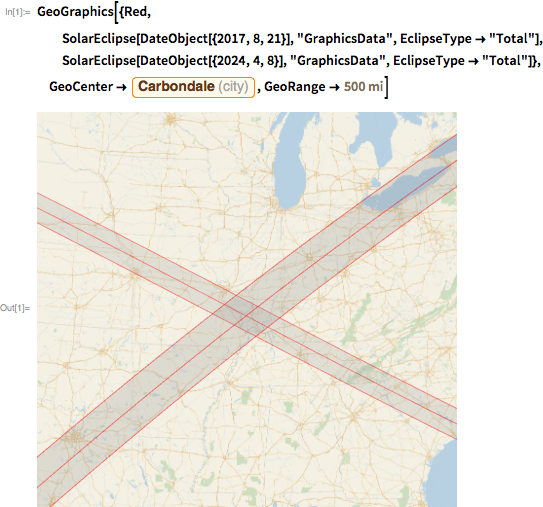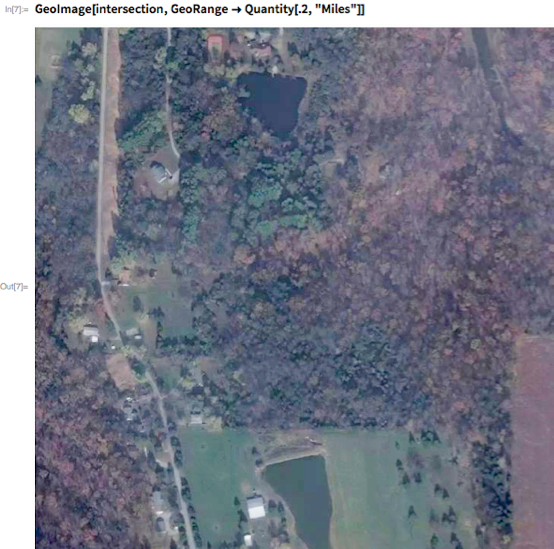Double eclipse! Or why Carbondale, Illinois, is special

Blog translation Double Eclipse! Or Why Carbondale, Illinois, Is Special Jeffrey Bryant, Research Programmer, Wolfram | Alpha Scientific Content.
________________________________________________________________________________
The upcoming full solar eclipse on August 21, 2017 is in itself an exciting event. But it is also interesting to note that on April 8, 2024, another full solar eclipse will occur, the path of which will pass almost perpendicular to the eclipse of what is happening this year.
')

Using several commands to process the appearance and scale of the map, you can see that the city of Carbondale, Illinois, is very close to the intersection of the trajectories. If you live there, you can see a total solar eclipse twice in just seven years.

Let's increase the accuracy of calculations and determine where the intersection of these two lines is located. First we will create two paths and remove the names of the GeoPosition functions.

Then we can use RegionIntersection to find the intersection of the paths and transport the result back to GeoPosition.

Approaching even closer and getting rid of some elements of the style that are unnecessary on a small scale, we can try to establish the point of intersection of the two central eclipse trajectories.

The optimal place to see the longest eclipse for both places seems to be southwest of Carbondale, near the east side of Cedar Lake along the South Poplar Curve road, where it meets Salem Road. At the same time, anywhere on the above image you can see a total solar eclipse during both eclipses.

Because of this intersection, I expect that many people plan to observe solar eclipses of both 2017 and 2024. Do not wait until the last minute to plan your trip!
How often do eclipse paths cross? We can get more information when researching data. First, we need to get the dates, lines and types of all eclipses in a given period of time. We use the interval of plus or minus 40 years from 2017 - a total of 80 years.



We will save only those eclipses for which data of its paths are available.

Create a set of all pairs of eclipses.

Now we define a function to check the intersection of given pairs of eclipse trajectories.

Finally, we will apply this function to all pairs of eclipses and save only those that intersect.

It turns out that during this period of time slightly more than a hundred eclipses intersect.

We can visualize the distribution of these eclipse paths, and see that many of them occur over the oceans. The chances of crossing eclipses on land are much lower.

So enjoy the eclipses of 2017 and 2024 if you live near Carbondale, Illinois! It is unlikely that you will see such an event in the near future, without making much effort.
Download this blog in Computable Document Format (CDF). Not familiar with CDF? Download your free player here .
Also read the blog. Get ready for a full 2017 solar eclipse.
Source: https://habr.com/ru/post/335936/
All Articles